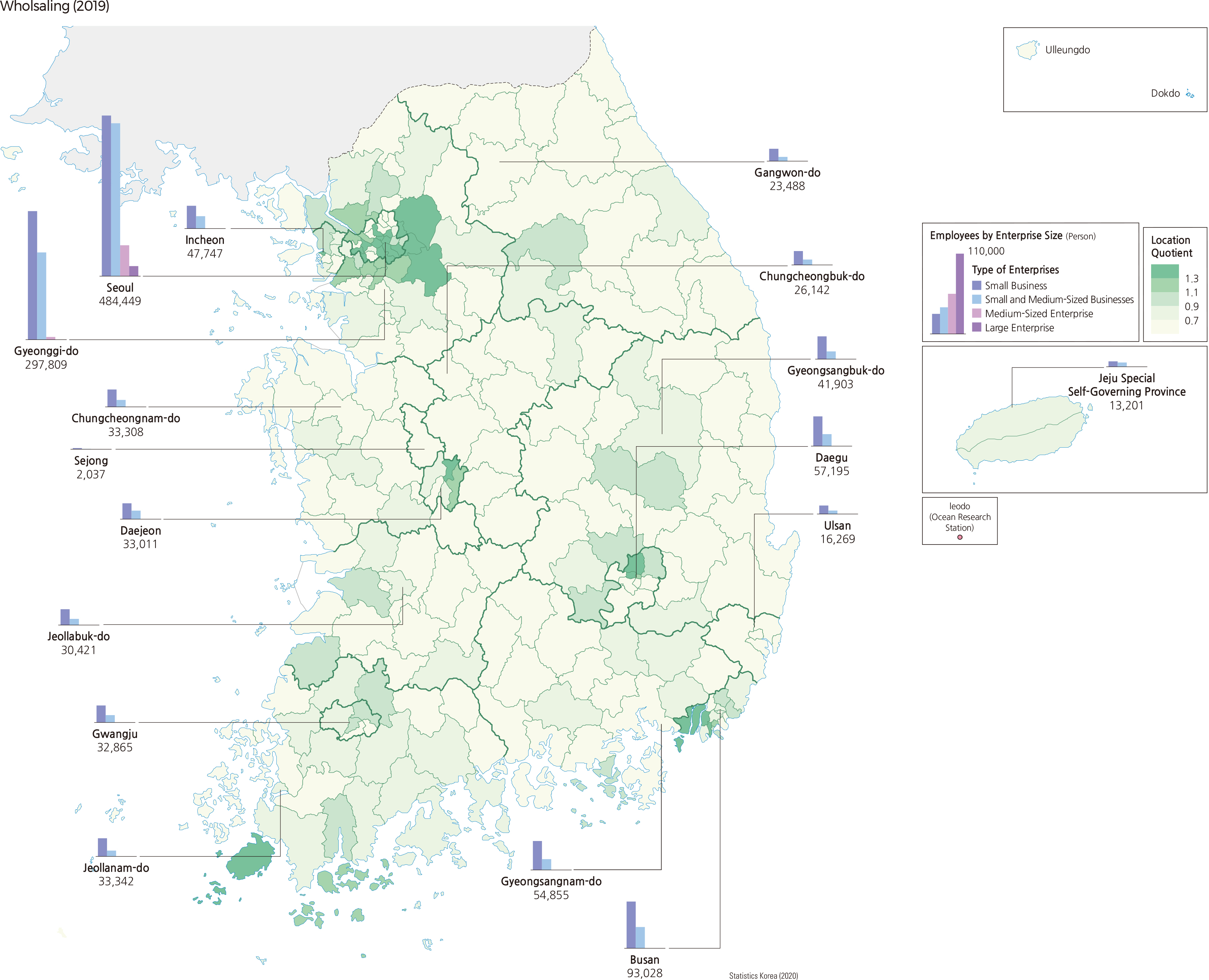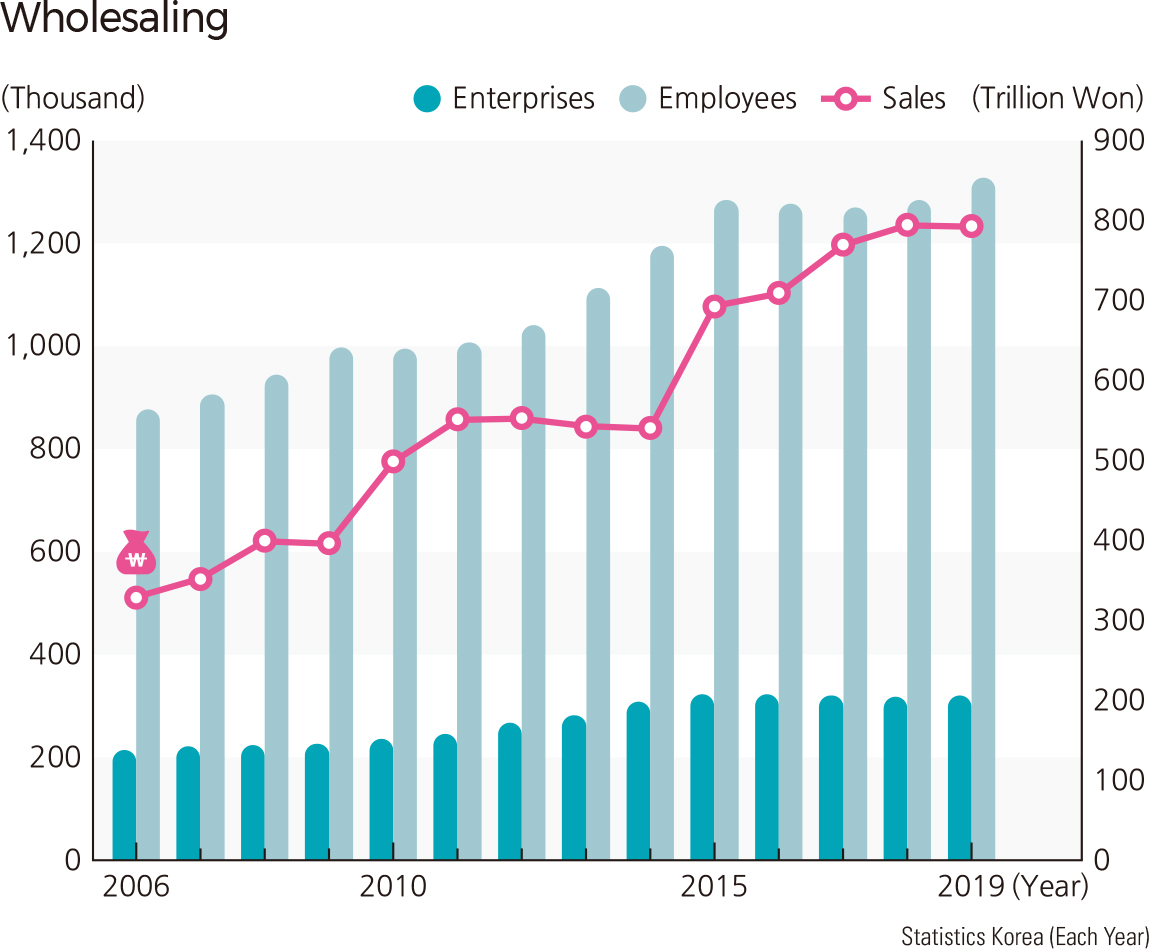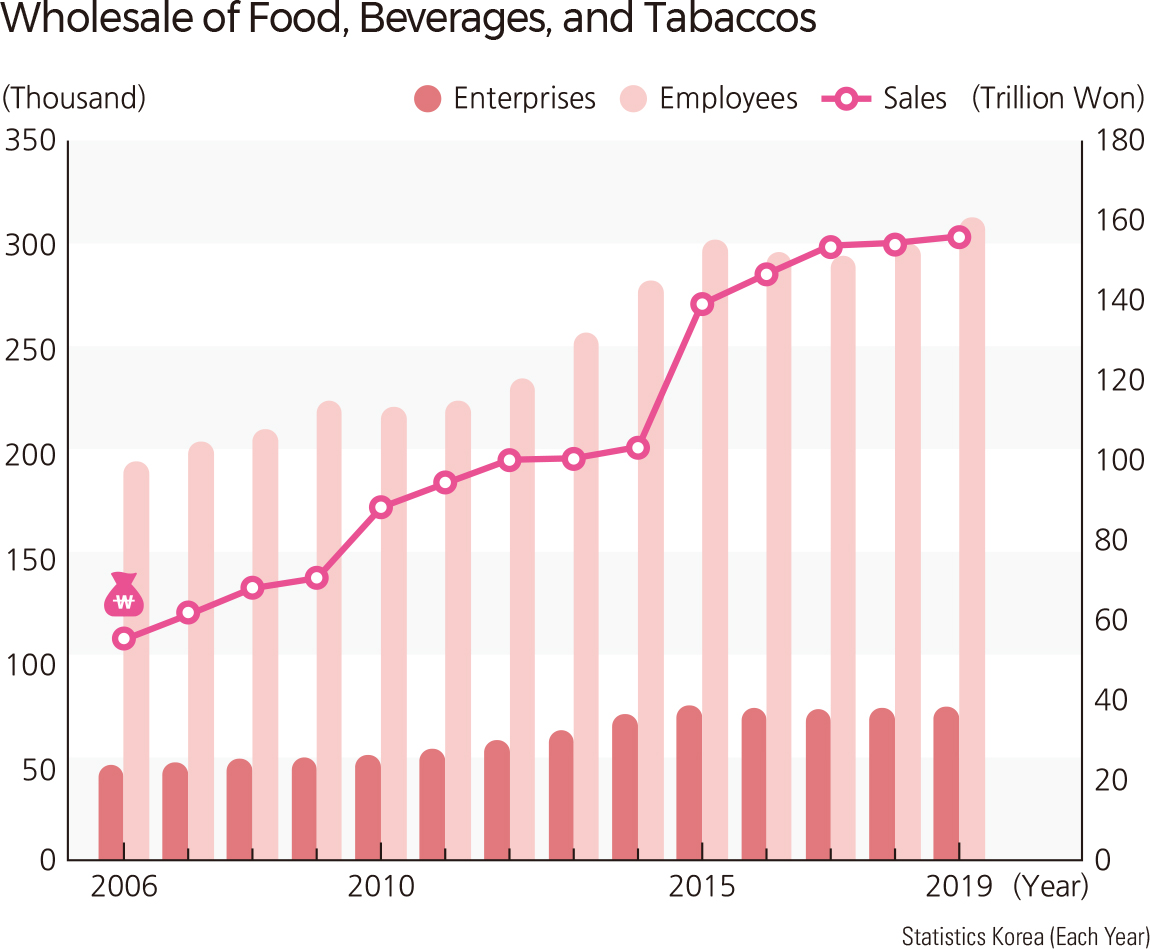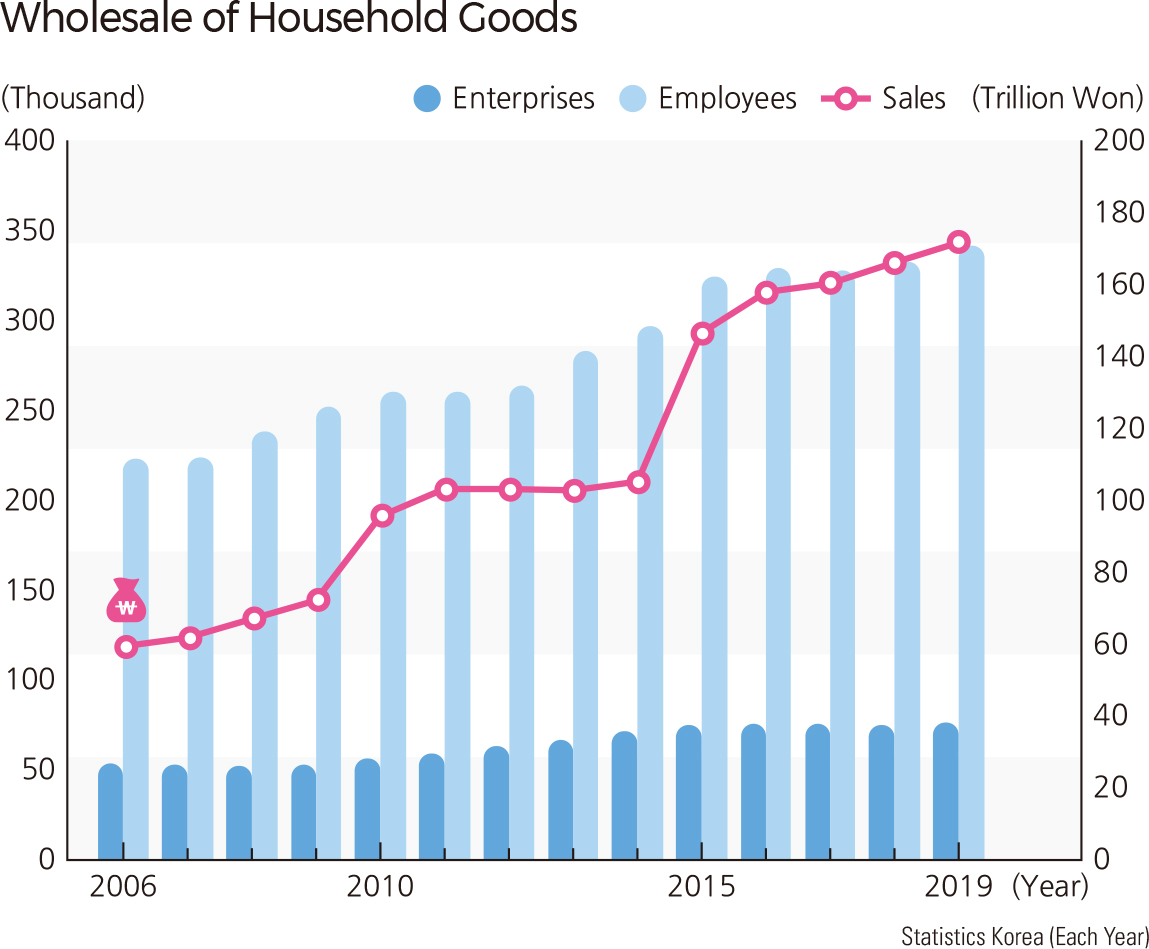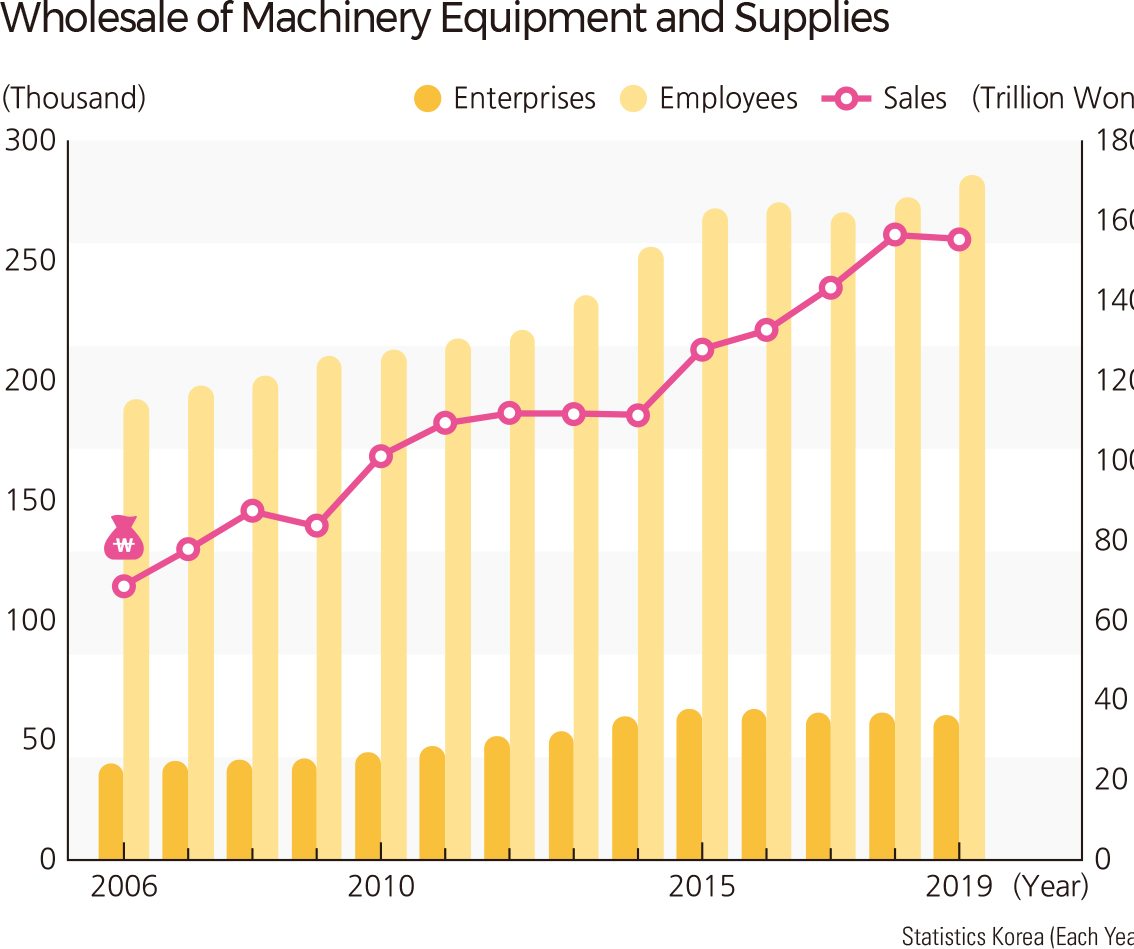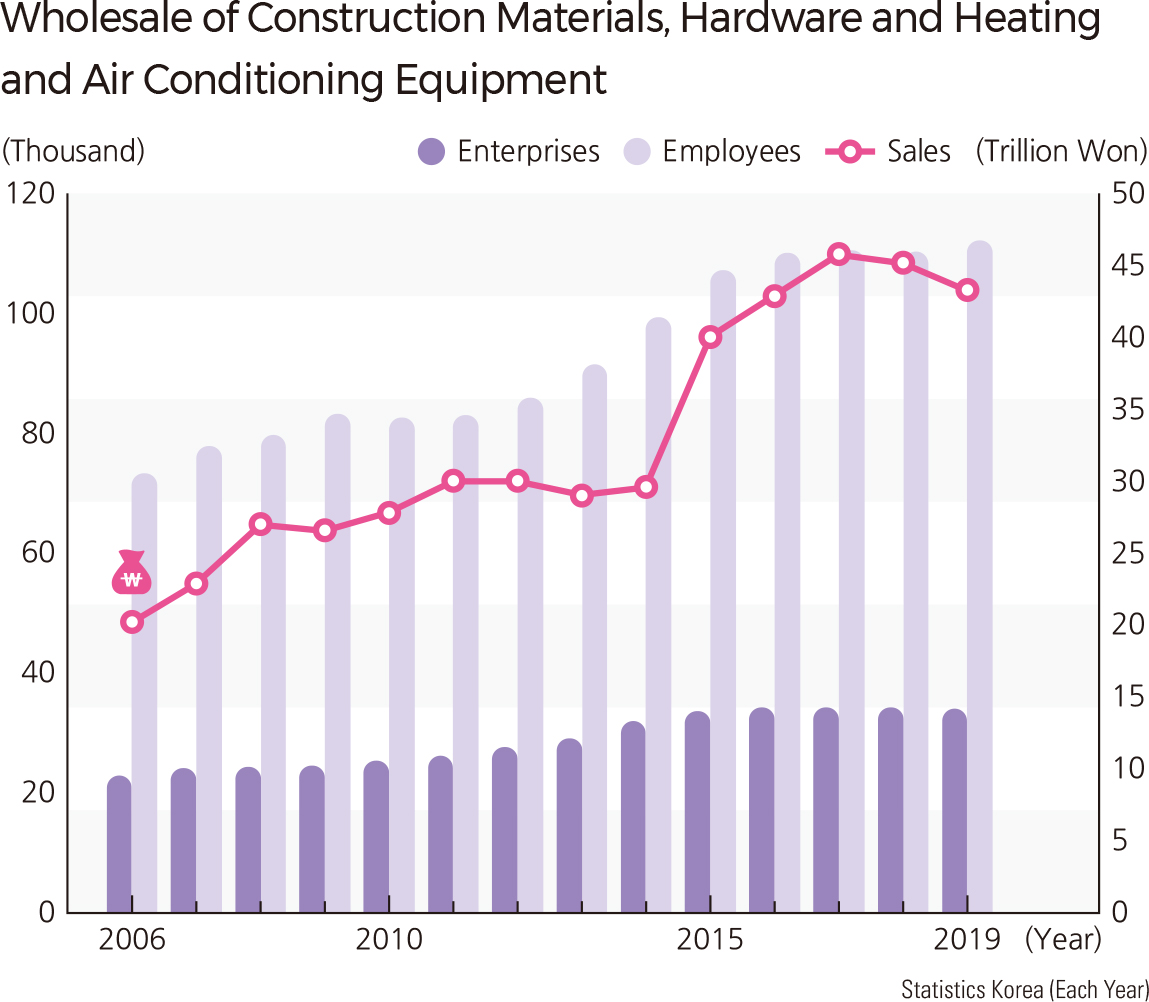English III 2021
With the growth of manufacturing, the economy expands and income levels improve; the volume of commodities transacted domestically and internationally become larger and more diverse. The distribution industry is a service sector that connects producers with consumers. Wholesale trade refers to economic activities for which intermediaries conduct business for resale to retailers or to manufacturers, construction builders, and restaurant operators who utilize the raw material. Unlike retail trading, wholesalers do not deal with individuals or final consumers but instead trade fewer items in larger quantities. In 2019, the wholesaling businesses accounted for 9.0% of the total number of service industries and employed 7.9% of the total number of service workers. The overall trend for wholesale industries in the late 1990s showed that the wholesaling industries had grown continuously except for two short economic setbacks. The geographical distribution of wholesalers indicates that most wholesaling businesses are located in major metropolitan areas and their vicinities that have the highest purchasing power and the greatest demand for wholesale trade. Wholesaling can be further divided into categories of food and beverage, cigarette wholesaling, household goods wholesaling, mechanical equipment and related goods wholesaling, construction material, steel goods, and heating equipment. Wholesaling traders tend to be located closer to the consumers than the producers. The wholesale of typical consumer goods—food and beverage and household goods—is very closely located in the population concentration. Usually, the large wholesale markets are divided by cities and provinces so that they tend to be located at the edges of or adjacent to their designated cities and provinces. On the other hand, wholesale traders that deal with mechanical equipment and related products tend to be located near industrial parks. Traditionally, wholesale markets that deal with construction materials, steel goods, and heating equipment tend to be located in large cities with a higher demand for construction. With the fast suburbanization process, they tend to be located in the exurbs and suburbs of metropolitan areas where most new construction takes place. |
